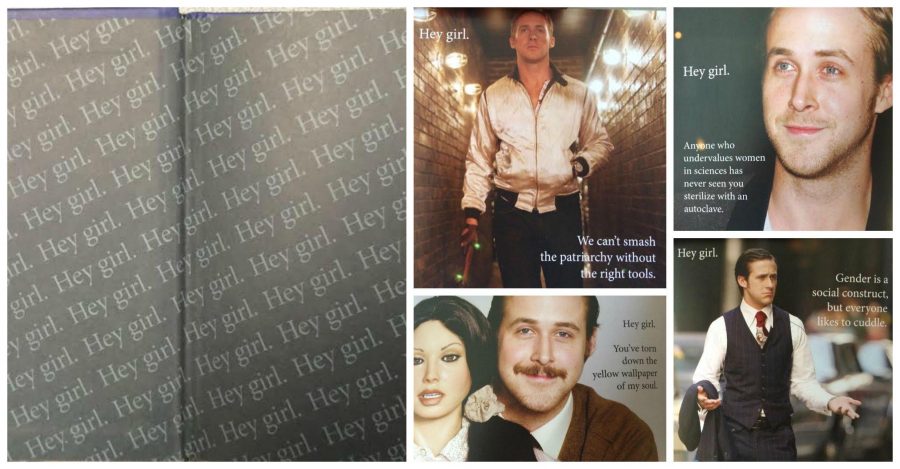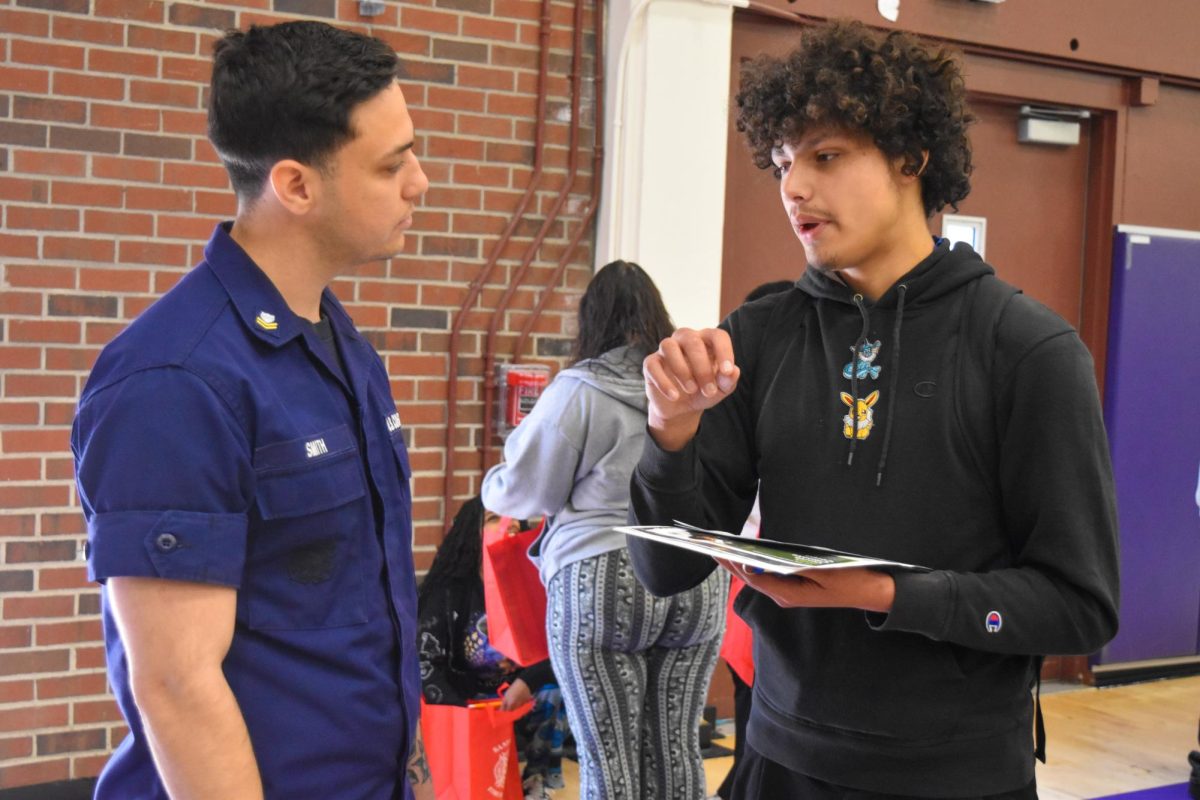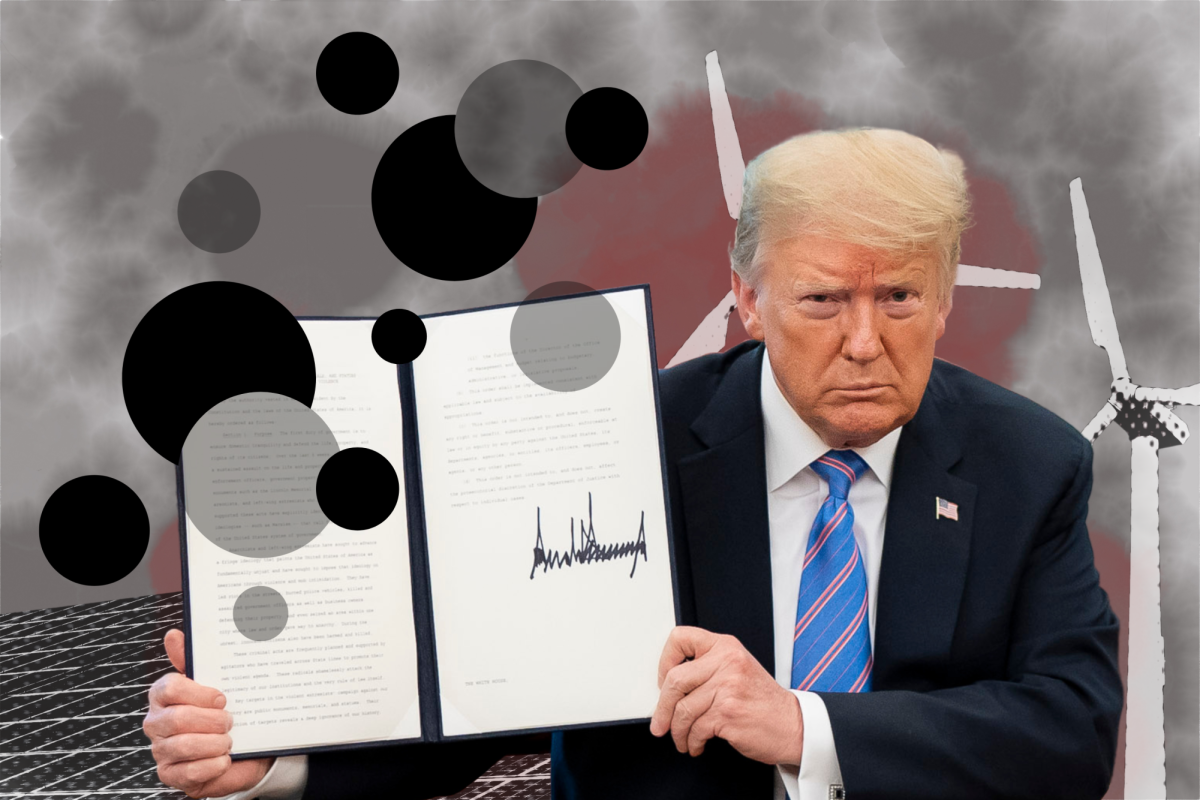Ryan Gosling takes on three different forms in English teacher Vennessa Nava’s classroom.
One is right at the front door, visible if not slightly faded, a movie poster for his 2011 neo-noir film Drive; he’s wearing black leather gloves in his equally black car and looks very pensive. 
The second is secluded off to the side, easily lost in the clutter of personal photos and posters Nava keeps in her corner of the room. It is hand drawn — he’s winking and smiling at something off into the distance and, in contrast to his Drive poster, looks very charming.
Last is a blue book on top of a metal filing cabinet titled: “Feminist Ryan Gosling: Feminists Theory.”
This is unlike the two posters Nava has up in her room, because that is what they are. Posters. They aren’t fairly thick books about Feminist Ryan Gosling’s thoughts on feminist theory. What can it possibly have to offer? Is it a critique on Hollywood or a memoir from Ryan Gosling’s life? Is it his commentary on the objectification of women?
“I thought it was just a Ryan Gosling calendar,” junior Catherine Yi said.
Yi’s taking American Literature Honors, and this is the first time she’s been in Nava’s class.
Former students in Nava’s class often need a little reminding as to what the Feminist Ryan Gosling book is, but once shown the cover, there is always immediate recognition.
“I thought it was a postcard,” junior Claire Wang, a previous student, said.
Turns out, Ryan Gosling never actually had anything to do with the book, and there aren’t that many words in it either — it’s a collection of pictures of a popular internet meme called Feminist Ryan Gosling, started by a grad student who just wanted to find an outlet for her frustration. She thought adding blurbs and snappy liners about the feminist theory over Ryan Gosling’s face would be a fun thing to circulate amongst her friends.
“It’s a good comedic way to access feminism,” Nava said. “You’ll often get references to feminist theorists…Audre Lorde, they talk about Queen Latifah, all sorts of theorists that you would encounter if you were studying feminism in grad school.”
When asked about some of her favorite pages, Nava laughed.
“Well it’s difficult because it makes me feel shallow, because some of my favorite pages are just the better pictures of him,” she said.
But, she does flip to many pages that talk about gender inequality, not just for males and females but for gender as a social construct as a whole. The book promotes women taking charge of their own lives, all printed over Ryan Gosling’s face, pretending he’s saying it to the reader to inspire them or to make them laugh.
According to Nava, even if you aren’t a graduate level feminist theorist, there are a lot of other relevant issues such as body positivity, women’s rights and gender fluidity that make this book easily accessible to others.
“And it’s also just breaking through beyond just men and women, as we have more fluidity in gender,” Nava said.
Scroll over the images to take a look at Nava’s more in-depth analysis of the book.
“I think it’s especially important to do some work around the idea that feminism isn’t a bad word,” she said. “Because I think in a lot of ways it’s taken on those connotations in our culture by really effective smear campaigns by people who don’t believe in equality among the genders.”
Nava hopes that by bringing this book into her classroom instead of a personal shelf at home, she’ll be able to address issues of gender in her classes and hopefully make students realize that feminism is about equality, not a word to be afraid of.
“In some, small visual way, this [book] is kind of like my marker that I support feminism,” Nava said.















